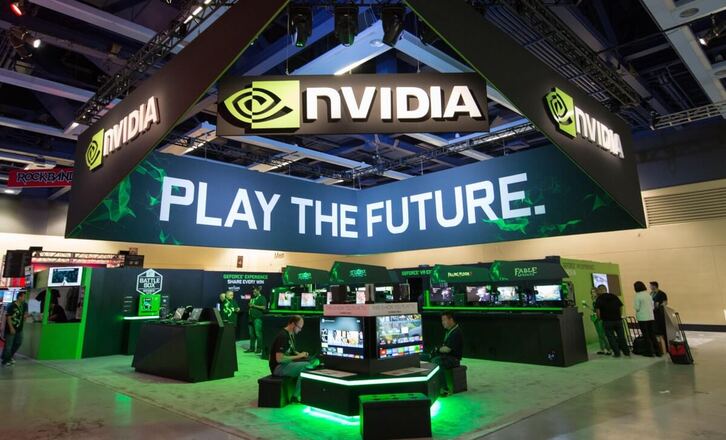
NVIDIA has officially become the world’s first company to reach a $5 trillion market capitalization, marking a historic milestone in both technology and financial markets. The company’s stock surged nearly 4% on Wednesday, continuing a rally fueled by record demand for its artificial intelligence (AI) chips and sweeping announcements made during its GTC event in Washington, D.C.
The achievement cements NVIDIA’s transformation from a niche graphics card maker into the dominant force driving the global AI revolution. Over the past five years, the company has reshaped computing by developing chips that power everything from generative AI models and robotics to autonomous vehicles and data centers. Its success has not only redefined semiconductor economics but has also elevated AI infrastructure to a central role in geopolitics and industrial strategy.
Wednesday’s rise came after U.S. President Donald Trump referenced an upcoming meeting with NVIDIA CEO Jensen Huang, sparking optimism over the company’s ability to expand business in China despite export restrictions. According to Bloomberg, Trump said the two would “be speaking about Blackwells,” referring to NVIDIA’s latest generation of AI processors. Industry observers interpreted the remark as a possible signal that limited versions of the chips could receive regulatory approval for sale to Chinese clients.
The company’s valuation milestone follows a string of announcements that have kept NVIDIA at the center of technological innovation. During GTC, Huang revealed that NVIDIA expects $500 billion in GPU orders for AI workloads and plans to build seven new AI supercomputers in collaboration with the U.S. Department of Energy. One of these systems will feature more than 10,000 of NVIDIA’s new Blackwell GPUs – processors designed to handle the immense computational demands of generative AI and scientific research.
Bridging Quantum and Classical Computing
NVIDIA also announced a $1 billion strategic investment in Nokia to help develop next-generation 6G communications infrastructure, expanding its role beyond computing hardware into the backbone of global connectivity. The move ties into a broader set of partnerships unveiled during GTC, including collaborations with Cisco, T-Mobile, Palantir, and Oracle to accelerate wireless and enterprise AI initiatives.
Other agreements announced include supplying 1,000 GPUs to pharmaceutical giant Eli Lilly to power AI-driven drug discovery, as well as working with Uber to develop a fleet of autonomous vehicles.
NVIDIA’s technology will also underpin robotics and automation projects for manufacturers such as Foxconn, Caterpillar, and Belden, along with major cloud integrations for Amazon Web Services.
The company’s new NVQLink architecture – introduced at GTC – aims to bridge quantum and classical computing, enabling faster data exchange between GPUs and quantum processors. NVIDIA said the open platform is being developed with quantum computing firms including Rigetti and IonQ, as well as several U.S. Department of Energy laboratories.
AI Factories
Despite its dominance, NVIDIA continues to navigate complex geopolitical dynamics. Its most recent quarterly report, released in late August, showed no sales of its H20 AI processors to China amid ongoing U.S. export restrictions. The White House previously indicated it had reached a tentative agreement allowing NVIDIA to ship certain chips to China in exchange for a 15% revenue share, though the company said the deal has yet to be finalized.
For investors, NVIDIA’s momentum has been staggering. Shares have climbed more than 50% since the beginning of the year, adding hundreds of billions of dollars in market value. The rally accelerated this week following the GTC announcements and growing confidence that the AI sector’s growth trajectory remains robust.
NVIDIA’s ascent to the $5 trillion mark underscores a seismic shift in the global tech landscape. As AI moves from experimentation to large-scale deployment, the company’s GPUs have become the essential infrastructure of digital intelligence – powering the world’s most advanced models, from ChatGPT to autonomous systems.
CEO Jensen Huang has described this moment as the dawn of “AI factories” – data centers designed not to store information, but to generate intelligence. “The age of AI has begun,” Huang told attendees at GTC. “Every company will become an intelligence manufacturer, and our technology is the engine behind it.”
With its market capitalization now rivaling the GDP of major economies, NVIDIA’s influence extends far beyond Silicon Valley. Its chips are shaping the pace of innovation across industries, governments, and research institutions. And with its latest breakthroughs in computing, networking, and quantum integration, NVIDIA appears intent on ensuring the AI revolution continues to run on its silicon.


